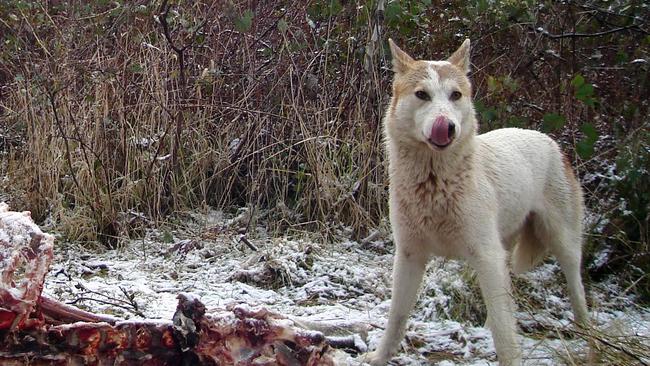Dingo court case: Animals Australia says wild dog control order “invalid”
Supreme Court documents reveal Animals Australia will argue for an end to wild dog control, and that sheep losses are “minuscule”.

Court documents have revealed Animals Australia will argue a Victorian ministerial order extending lethal control of wild dogs and dingoes until October 1 “is invalid and of no effect” and that sheep losses are “minuscule”.
AA’s originating motion, lodged with the Supreme Court, states “it was legally irrational or unreasonable” to extend the order when faced with new research that concludes most wild dogs are in fact dingoes and that hybridisation of dingoes and dogs is rare.
The research was conducted by University of NSW molecular biologist Kylie Cairns, whose genetic testing of 64 Victorian wild dogs concluded nearly 90 per cent were pure dingoes.
Given Victoria has declared the dingo a threatened species under the Flora and Fauna Guarantee Act 1988, AA is set to argue the research shows the government is obligated to protect all wild dogs as dingoes, rather than allow lethal control on public land within 3km of private properties to continue.
But National Wild Dog Management Co-ordinator Greg Mifsud said “if all wild dogs are dingoes, then they don’t meet the criteria under the Act (of being threatened) because they’re common and abundant”.
Up until now pure dingoes were thought to be rare in southeast Australia, due to hybridisation with domestic dogs, which led to them being declared as threatened by Victoria’s Scientific Advisory Committee in 2013.
In 2021 the committee went a step further declaring the dingo a separate species Canis lupus dingo, despite every other Australian state and the International Union for Conservation of Nature classifying the dingo as “feral domestic dogs Canis familiaris” and not threatened.
AA’s origination motion, prepared by solicitors K&L Gates, also argues the ministerial order allowing wild dog control to continue until at least September 30, was irrational given livestock losses from wild dogs and dingoes were a “minuscule proportion of total flock size” at “about 1000 sheep per year out of a total flock size of around 15 million sheep (i.e. 0.0066 per cent — thousandths of one per cent)”.
But Victorian Farmers Federation livestock group vice president Peter Star said the low stock losses were a measure of Victoria’s dog control program’s success.
“It shows the wild dog control program is working as it should,” Mr Star said, warning the government had a duty of care to ensure wild dogs did not pose a threat to Victoria’s $4.5 billion sheep and wool industry.




